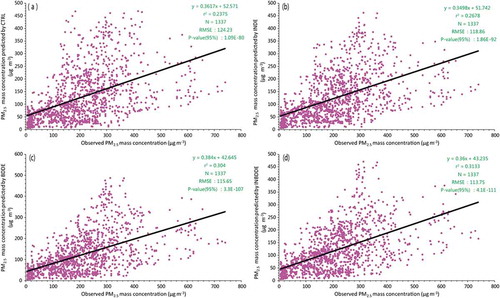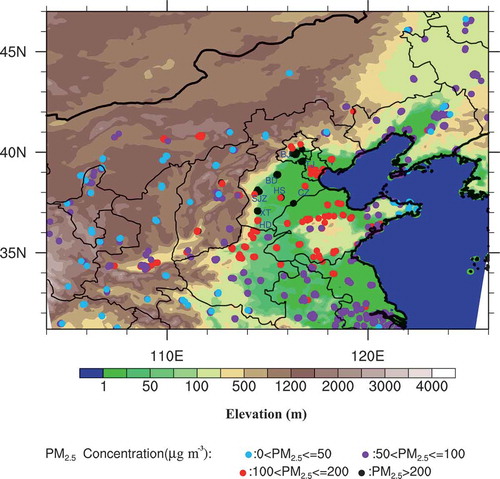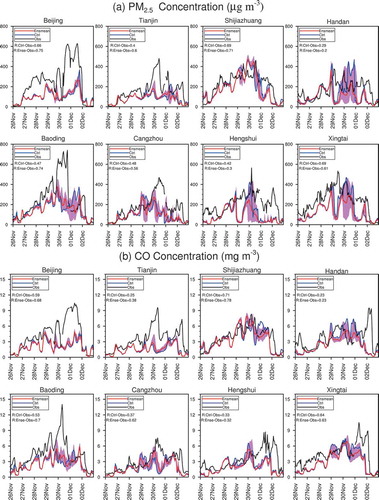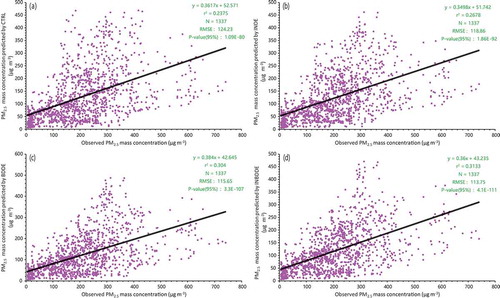Figures & data

Figure 1. The model domain with elevation (shaded; units: m). Blue, purple, red, and black dots denote the observed hourly averaged PM2.5 concentration (units: μg m−3) during 26 November to 2 December. The abbreviations BJ, TJ, BD, CZ, SJZ, HS, XT, and HD denote the eight cities as defined in the text.

Table 1. Brief description of the initial conditions and LBCs in the CTRL, INDE, BDDE, and INBDDE experiments.
Figure 2. (a) Hourly PM2.5 concentration time series in eight cities predicted by CTRL (blue line), the INBDDE ensemble mean (red line), and the observation (black line). Pink filling represents the maximum and minimum range (or dispersion) of the forecasting results of 10 ensemble members. The correlation coefficients between the forecasting concentration of CTRL, INBDDE and the observed values are marked on the left-hand side. The bottom panel (b) is the same as (a), but for CO.

Figure 3. Scatterplots of the observed PM2.5 concentration (units: μg m−3) in eight cities and the predicted PM2.5 concentration from (a) CTRL, (b) INDE, (c) BDDE and (d) INBDDE, respectively. The black lines indicate the linear trend estimation based on the least-squares method.

Table 2. Statistics of PM2.5 concentration (units: μg m−3) and surface meteorological variables in CTRL, INDE, BDDE, and INBDDE. RH2M and T2M denote the relative humidity (units: %) and temperature (units: °C) at 2 m near the ground; WS10 and WD10 denote the wind speed (units: m s−1) and direction (units: °) at 10 m near the ground. The ensemble mean values of the above variables were used to compute the statistical parameters in INDE, BDDE, and INBDDE.

